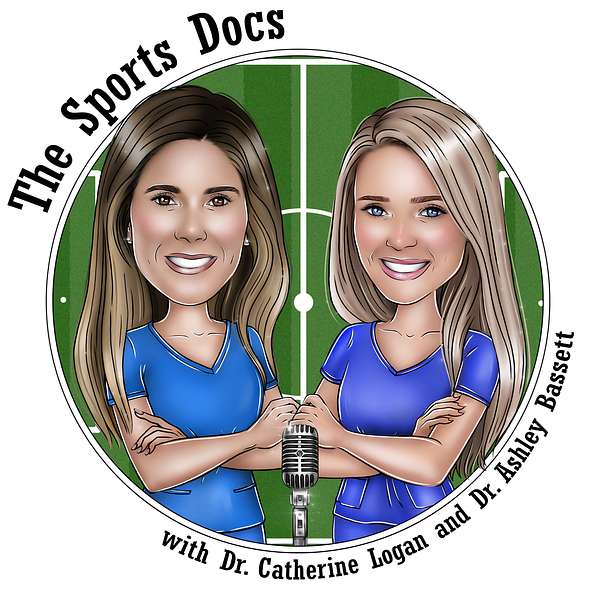
The Sports Docs Podcast
Sports medicine is a constantly evolving field, with hundreds of new articles published each month on the topic. This ever-growing wealth of information can make it challenging to stay updated on the newest approaches and techniques, and to know which data should actually change your practice. Join orthopedic surgeons, Dr. Catherine Logan and Dr. Ashley Bassett, as they chat about the most recent developments in sports medicine and dissect through all the noise.
On each episode of The Sports Docs podcast, the hosts will tackle a specific injury – from ACL tears to shoulder instability – and review the top research from various high-impact journals that month, including The American Journal of Sports Medicine, Arthroscopy: The Journal of Arthroscopic and Related Surgery, Sports Health, Journal of Shoulder and Elbow Surgeons, and more. The Sports Docs will also be joined by experts in the field of sports medicine – orthopedic surgeons, nonoperative sports medicine specialists, athletes, physical therapists, athletic trainers and others – to provide a fresh and well-rounded perspective based on their unique experiences.
The Sports Docs – Dr. Logan & Dr. Bassett – are friends & former co-residents from the Harvard Combined Orthopaedic Residency Program, who went onto esteemed sports medicine fellowships at The Steadman Clinic and The Rothman Institute, respectively. Dr. Logan practices in Denver, CO, and serves as Team Physician for Men's USA Lacrosse & as a Team Physician for U.S. Ski & Snowboard. Dr. Bassett is the director of the Women’s Sports Medicine Center at the Orthopedic Institute of New Jersey and practices across northern NJ, primarily in Morris and Sussex Counties.
Together, they will bring monthly conversations on how to care for athletes of all ages and levels of play, with a healthy mix of cutting-edge science and real-world application.
The Sports Docs Podcast
10. Dr. Robin West: Return to Play After Orthopaedic Injury - Part II
We’re going to continue our discussion with Dr. Robin West and dive deeper into return to play decision making, including criteria for clearance and novel treatments to expedite return.
We’ll start our discussion today with the systematic review and meta-analysis titled Return-to-Competition Criteria After Ulnar Collateral Ligament Reconstruction from the June issue of AJSM this year. Chris Ahmad and his team at Columbia University found that there is minimal literature describing the return to play process after UCL reconstruction. There are currently no validated or universally accepted guidelines for determining when an athlete is safe to return to play. The authors found only three specific criteria across all studies. Completion of a return to throwing program was the most frequently used criterion, followed by time from surgery and lastly completion of a return to mound program for pitchers. Nine months from surgery was the most common time point used. No study mentioned return to play criteria relating to pain, motion, strength, endurance, balance, coordination or fear of reinjury.
Then, from the April 2020 issue of OJSM, we wrap up with the publication Platelet-Rich Plasma Shortens Return to Play in NFL Players With Acute Hamstring Injuries. A quick overview of PRP for our listeners. PRP is a concentrated source of platelets and growth factors, prepared by centrifuging the patient’s whole blood. PRP can be leukocyte rich or leukocyte poor, referring to the concentration of white blood cells. Selection of PRP type depends on the pathology being treated, with leukocyte rich PRP thought to be beneficial for conditions like arthritis and leukocyte poor PRP being more advantageous for acute muscle injuries.
Jim Bradley and colleagues at UPMC reported that leukocyte poor PRP injections allowed for faster return to play in athletes with grade 2 hamstring injuries, with a 1 game overall difference. There was no difference in total days missed or time to return to practice. The authors recommend using PRP with a low platelet count and low leukocyte count, as PRP preparations rich in platelets and leukocytes may lead to increased local reaction and subsequent scarring, increasing the risk of reinjury.